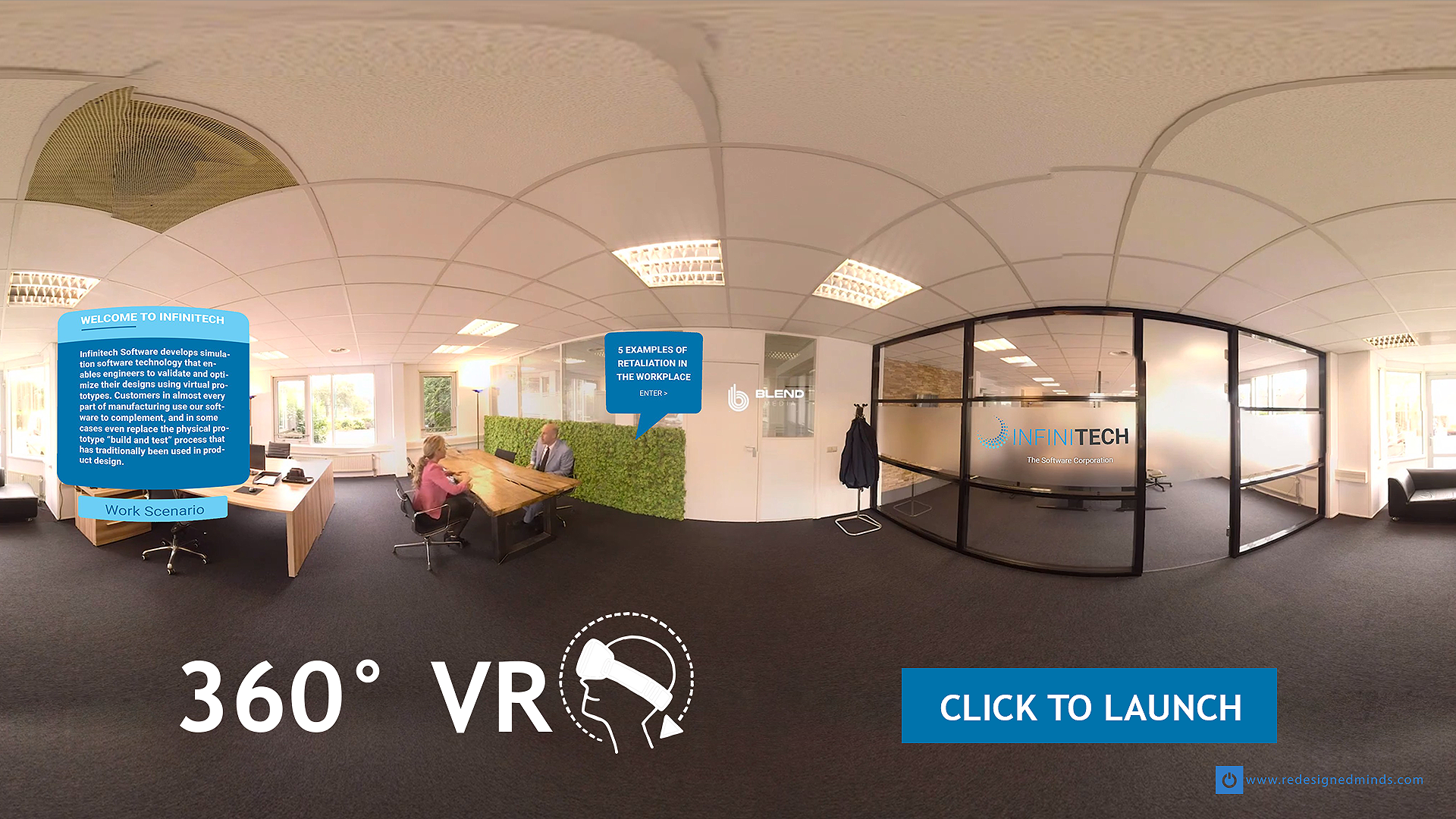How many times have you heard instructional designers talk about learner engagement? You will often hear words like memorable, attention, sticky, engaging, immersive, and many more.
Why do learners boringly skimp through a learning course without genuinely engaging and learning what the course author has prepared for them?
I had a recent conversation with a friend working at a bank, and he mentioned how rapidly clicking the next button helps him complete boring training courses. To attain the 80% score needed, he would use his phone to take pictures of the questions with the correct feedback, retake it and pass. The torturous experience was over.
It is time for developers and performance consultants to understand technology has changed. Flat and dry text, the pathetic stock imagery of people in some random interaction is fading away.
Enter 360° VR interactive learning experience. What 360° does is mind-blowing, it allows developers like myself to create these immersive environments packed with rich interactive content, allowing viewing in every direction, providing a 360° panoramic feel as though you were pulled smack dab into the middle of that environment.
Think Star Trek teleport, the learner enters an immersive environment and mentally transport themselves and experiences another place without physically being there, which heightens the richness of a fully interactive experience.
By far, engagement metrics for 360° video content consistently outperform 2D formats, with higher click-through rates and increased stay time. And this will in the long run return training investment back to the company, with results in improved job performance.
With that in mind, here is a fictional retaliation scenario I captured in 360°. On launch, the name of the company appears first, as you pan around you get to learn about the company, people having some unpleasant conversation and example scenarios. This barely scratches the surface of what is possible, deep mapping into mini-scenarios or branching scenarios can be all achieved depending on the nature of the activity.
With all the capabilities mentioned like audio, links, video, text and more within the 360° environments, there is no reason why developers should not jump into this. In previous times companies have shied away from VR, due to cost but not anymore. With minimal investment, VR is possible. One company involved in making this affordable is Blend Media, who have done a phenomenal job bringing VR to eLearning developers.
Putting a 360° story together is simple, here are the basics:
1. Buy or capture 360° video or imagery
2. Upload to the 360° platform
3. Add graphic elements
4. Build scenes
5. Test
6. Publish and share
Want to develop a 360° VR interactive learning experience?
Contact me for support!
11
replies
AVAILABLE: CONSULTANT
Focus is on the training inputs of your business and delivering them with the right quality and in a timely fashion.
AVAILABLE: VENDOR
Bringing relentlessly high standards that drive teams to deliver the highest quality in eLearning products.
AVAILABLE: FREELANCER
Starting with the user and working backwards to vigorously understand and develop accurate performance solutions.


Good article. I’m going through many of these issues as well..
It truly is a discovery, and the returns are innumerable. We must build amazing digital capabilities, and VR, AR, MR, are our bedrock.
Like!! Great article post.Really thank you! Really Cool.
Thank you very much, glad you found it helpful.
It’s not my first time to visit this website,
i am browsing this site dailly and get pleasant data from here all
the time.
Like!! Really appreciate you sharing this blog post.Really thank you! Keep writing.
Thanks so much for the blog post.
Thanks so much for the blog post.
I always spent my half an hour to read this web site’s articles or reviews daily along with a mug of coffee.
I love looking through a post that can make people think. Also, many thanks for permitting me to comment!
Wow, great article.Really looking forward to read more.